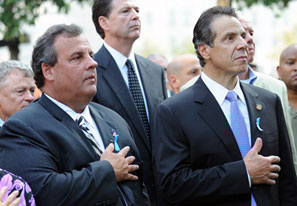
The Bridgegate affair in New Jersey was a seedy political scandal, in which some staffers and allies of Gov. Chris Christie used their influence with a bi-state agency to tie up traffic around the George Washington Bridge to punish a political opponent. The emerging Moreland Commission outrage in New York State, as set out in a recent New York Times story about the efforts of Cuomo administration members to hobble an investigation into political corruption, is potentially far worse. At best, it represents a cynical effort by Cuomo, who ran for election four years ago promising to clean up Albany, to protect friends and campaign donors when investigators began asking them uncomfortable questions. At worst, as U.S. Attorney Preet Bharara suggested last week, it might involve criminal tampering with an investigation probing links between campaign contributions and political favors, like tax credits.
The national media’s response to these scandals has been disproportionate, though not in the way you might imagine. Bridgegate quickly became a media feeding frenzy generating immense coverage nationally. Moreland-gate, by contrast, has produced yawns from much of the national media so far. The Moreland story is still relatively new, but even by this time in the Bridgegate news cycle, the national media had produced perhaps 10 times as much coverage of Christie’s woes.
Finally, a reason to check your email.
Sign up for our free newsletter today.
Trying to trace precisely when a political scandal emerges is not an exact science. But in the case of Bridgegate and Moreland, we have some good markers. Both episodes drew mentions in the press for months before they attracted widespread attention locally. In New Jersey, Bridgegate really hit home in early January of this year, with the discovery of emails from members of Christie’s staff suggesting that the Port Authority of New York and New Jersey create traffic headaches around the bridge in an act of political retribution against Fort Lee mayor Mark Sokolich, a Democrat who, unlike some other members of his party, did not endorse Christie for reelection. Similarly, though New York papers had been publishing articles and editorials for months on Cuomo’s decision to shut down the Moreland Commission just halfway through its original term, the New York Times’s bombshell July 23 piece, resulting from a three-month investigation, assembled the first lengthy narrative on the story—complete with emails, subpoenas, and other internal documents that chronicle the pressure Cuomo staffers put on investigators to look the other way.
Here’s how all of this has played out. In the six days after disclosure of the Bridgegate emails, newspapers outside of New Jersey mentioned Christie and the bridge scandal more than 500 times. The matter attracted attention around the country, from the Visala Times-Delta in California to the Portland (Maine) Press Herald and the Bismarck (North Dakota) Tribune, according to the Nexis newspaper database. The Norfolk Virginian-Pilot ran five stories and one letter to the editor. According to transcripts of television and radio broadcasts collected by Nexis, the bridge scandal appeared hundreds more times on national broadcasts, led by CNN, which mentioned the story more than 100 times. While some of these were merely brief references during news roundups, the cable network also did numerous stories with headlines like, WHAT DID CHRISTIE KNOW?, CHRISTIE: I AM NOT A BULLY, PAYBACK POLITICS IN THE SPOTLIGHT, and FALLOUT IN NJ BRIDGE SCANDAL.
Now consider the treatment of Cuomo and the budding Moreland scandal. In the same number of days following the Times’s report, virtually all the coverage of the Moreland revelations has come from within New York State. While local papers have published about 140 stories, only about a dozen newspapers outside of New York have even mentioned the story, according to Nexis—including in neighboring states. Consider the response (or non-response) of the Washington Post. Five days after the Times’s bombshell story on Moreland, the Post ran a lengthy story about Christie’s trouble with New Jersey’s underfunded pensions, but had yet to run anything on the Moreland controversy. By contrast, five days after the Bridgegate emails had emerged, the Post’s reporters and columnists had cited the Christie scandal 35 times, in stories with headlines like, DAMAGED BRIDGE, N.J. BRIDGE DRAMA IS MADE-FOR-TV SCANDAL, and CHRIS CHRISTIE’S VERY SAD DAY. Similarly, despite the opening of an investigation into the Moreland matter by the U.S. Attorney for Manhattan, the episode has generated just 20 broadcast mentions, led by MSNBC, which has done half a dozen stories so far. It’s possible that more pieces from this period will appear in the broadcast database as they are transcribed, but the paltry number of broadcast stories up to now is consistent with the lack of interest the newspapers have shown.
One could argue that the large number of stories on Bridgegate, the volume of which persisted throughout the winter, is attributable to Governor Christie’s outsize personality and his stature as a potential presidential candidate. But Andrew Cuomo is hardly an insignificant figure within the Democratic Party. He served in a cabinet position in Washington and is governor of a state with the third-most electoral votes.
Neither Bridgegate nor what we’ve learned so far about the Moreland Commission affair has covered either governor in glory. But the manipulation, in New Jersey, of a government transportation agency for political payback hardly measures up to the political interference, in New York, with a corruption investigation—except, it seems, by the standards of the news media.